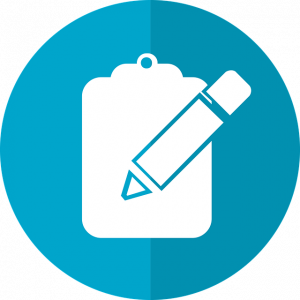Writing process
Sometimes it is difficult to get started. You may have some of these thoughts:
- I don’t know where to start
- I’m not inspired to start
- I don’t know what I am going to say
- Journal articles have to be perfect
- There is no way I can write at that level
These are common writing blocks. Notice if they are familiar to you. When writing for publication, you don’t have to begin at the beginning, you don’t need to wait for inspiration to strike, know exactly what to say, or write perfectly in your first draft. You just need to have an idea.
But how do you start writing?
However, we think better through writing. One way to start writing is to define your writing focus:
If you are writing an article from your PhD do not attempt to condense the entire PhD in an article! Ask yourself: what from my thesis could be developed into a publication? For example:
- Answers to each research question (literature, results, discussion)
- Themes developed from your research
- Review paper from your literature review
- Methodological paper (if your research involved a new methodology)
- Theoretical paper (if you created a new theory or development of an existing theory)
- For creative practice research, the practices, experiments or iterations of your practice
If you are adapting a conference presentation you need to shift verbal and visual language into a witten form.
Tools for defining a writing focus
- Write an abstract. Use Miles’ method – one or two sentences on each point:
- What is the problem?
- Why is it a problem?
- What am I doing about it?
- Why does it matter?
- Say it out loud (‘walking and talking’)
- Pre-writing techniques:
freewriting, listing, journalist questions (who, what, when, where, why, how) - What is it really about?
Also by using chunks you can also start writing anywhere. Rules for writing in chunks:
- Don’t think about the structure of your paper
- Do think about ONE element you’ll write about
Possible elements to write about:
- The direction of the paper: “This paper seeks answers to…”
- How your research relates to the literature: “This study both confirms and extends the literature on…”
- What’s new in your research?: “This paper contributes to… “
- What’s your argument?: “This paper argues that…”
If you want to write a journal article, read journal articles and notice things about them such as:
- the types of articles they publish
- the journal guidelines and expectations
- the papers in terms of their:
- length
- structure
- writing style
 Activity: What is it really about?
Activity: What is it really about?
We think through writing. This is due to something called metacognition, which allows us to be aware of our own thinking. In this exercise, we are using writing as a tool for refining our focus.
This task requires you to write six sentences:
Begin with “It is about…”
- Write a sentence explaining what your article is about.
Begin with “It is about…”Repeat this process twice: - Write another sentence, underneath, beginning with “It is really about…”Repeat this process twice:
- “It is about…”really about…”
- “It is really about…”
- “It is about…”really about…”
- “It is really about…”
You should have six sentences. Use this focus to lead your writing approach and structure. Reflect over your process of writing to see how your thinking has shifted. Has your focus changed or become solidified across your six lines? Use this focus to lead your writing approach and structure.
For more resources, have a look at the Writing and Submitting tab in the Strategic Publishing Library guide.
Writing resources
Here are some resources that can assist with writing and preparing a publication for submission:
An online module from the Elsevier Research Academy which provides an introduction to the publishing process including how to structure an article and tips on writing an abstract.
This website from Sage Publishing, provides guides and resources for selecting a journal and writing, submitting and promoting an article. It focuses on submitting to Sage published journals.
This website from Emerald Publishing provides tips and examples on how to structure an article.
This website from Elsevier provides guides and resources for selecting a journal and writing, submitting and promoting an article. It focuses on submitting to Elsevier published journals.
Information from the PhD Up workshop on writing journal articles.
This free course offered by Stanford, includes topics on principles of good writing, tricks for writing faster and with less anxiety, the format of a scientific manuscript, peer review, grant writing, ethical issues in scientific publication, and writing for general audiences.
